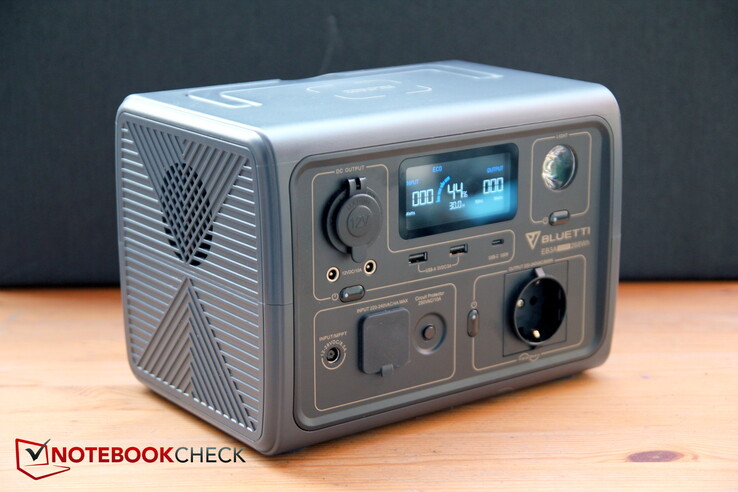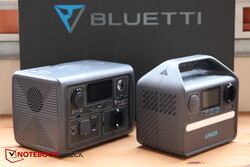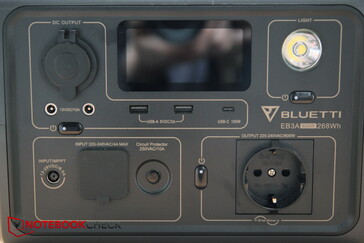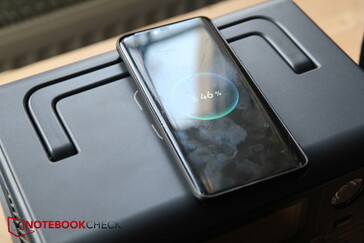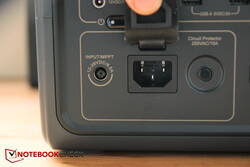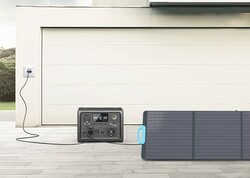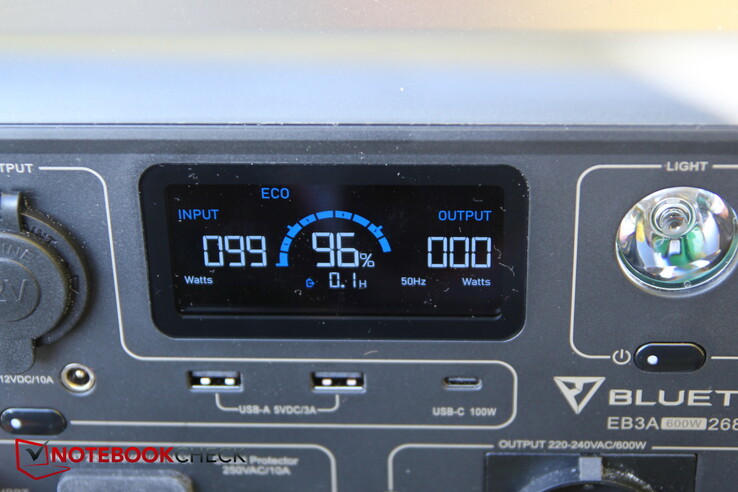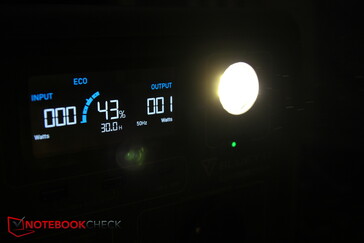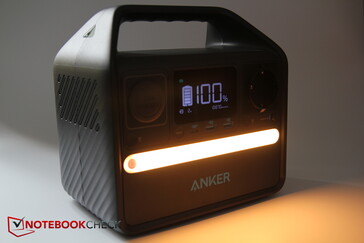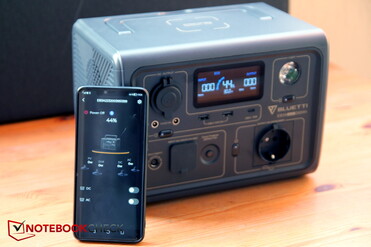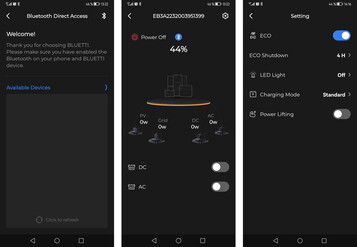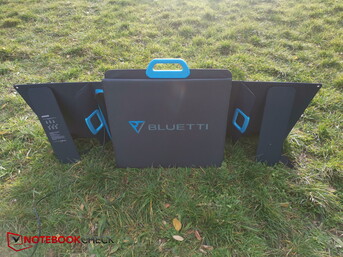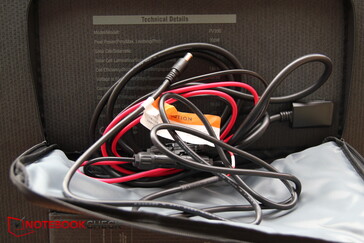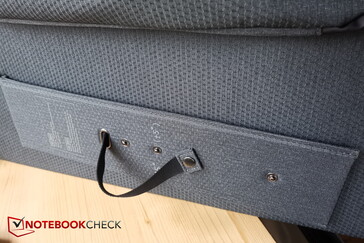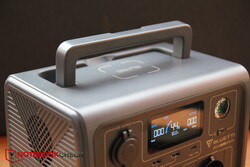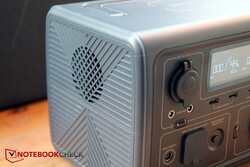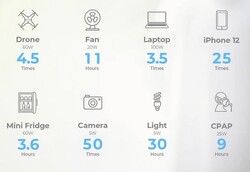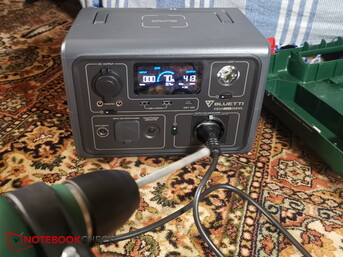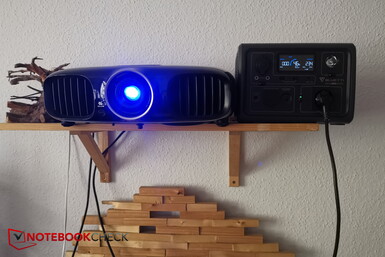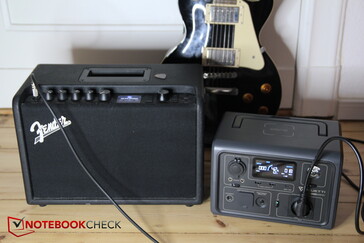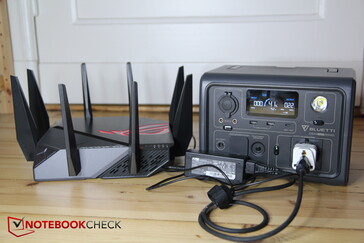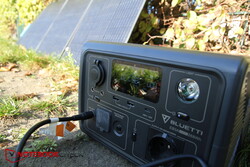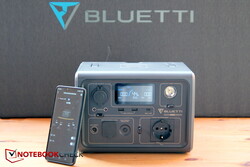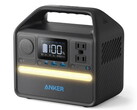Bluetti EB3A power station with 200W solar panel hands-on test: A small power cube
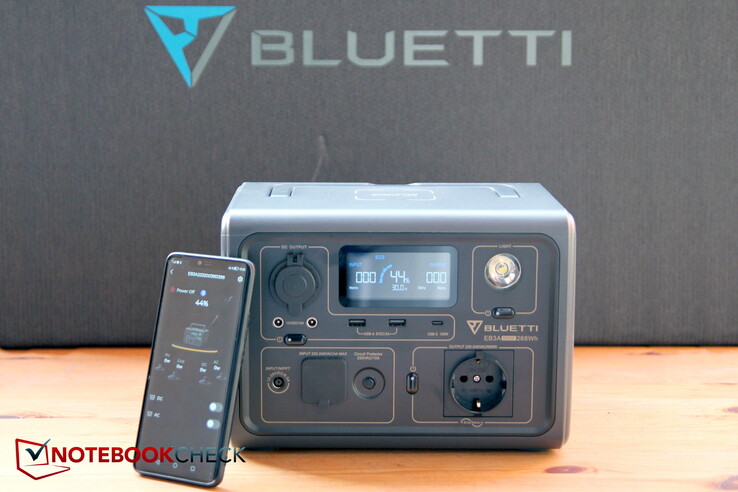
Until now, we only tested the very large, modular AC200 Max power station from Bluetti. In contrast, the small box with the cryptical label EB3A is the dwarf among Bluetti's power stations. But that also has the advantage of being extremely portable, allowing you to take it almost anywhere.
With this, it is more comparable to the small Anker 521 power station that we also already tested. Compared to the Anker device, the Bluetti has a few advantages: Despite its similar capacity of 268 Wh (Anker 521 = 256 Wh), it is able to deliver a constant power output of 600 watts, allowing you to power even slightly larger devices.
We compare the technical characteristics of the two power stations in the table below. Our test examines the advantages and disadvantages of the EB3A, also evaluating how it fares in practice.
Bluetti EB3A vs Anker 521
| Specs | Bluetti EB3A | Anker 521 |
|---|---|---|
| Capacity | 268 Wh | 256 Wh |
| Constant power | 600 W | 200 W |
| Peak power | 1,200 W | 400 W |
| AC charging | Turbo 330 W; Standard 268 W | 65 W |
| DC/Solar charging | 200 W (11 - 28 V; 8.5 A) | 65 W (11 - 128 V; 5.5 A) |
| Charging combined | 430 W | 65 W |
| Connections | 1x AC outlet, 2x DC in, 1x 12V car in/out 100 W USB-C, 2x USB-A (5 V, 3 A), DC in, AC in (mains plug), wireless charging pad | 1x AC outlet, AC/DC in, 2x USB-A, 1x USB-C, 1x 12 V car |
| Weight | 4.6 kg | 4.34 kg |
| Size | 255 x 180 x 183 mm | 216 x 211.4 x 144 mm |
| Price | 399 € (~$428), currently 319 € (~$343) | 369 € (~$396), currently 279 € (~$300) |
| Warranty | 2 years (panel 1 year) | 5 years |
Equipment - Clear victory for Bluetti
The recommended retail price of the Bluetti EB3A is about 30 € (~$32) more expensive than the Anker 521. While both have a similar capacity, the EB3A is slightly larger and heavier, but both fall into the same product category.
You can already see from the values in the table above, that the EB3A from Bluetti is ahead of the Anker 521 competitor in several regards. This already begins with the connections. In addition to the outlet and usual USB ports, the Bluetti PS also offers two 12 V DC input ports with 10 A and especially also a wireless charging pad on top, which can wirelessly charge compatible smartphones at up to 15 W.
However, what is even more relevant are the power values in terms of the output power as well as charging power. The Bluetti PS is able to power devices up to 600 W, while the Anker PS only delivers 200 W. Even though it hardly makes any sense to constantly run a 600-W device from a 250 Wh battery, for a brief run of a drill or small water cooker or the like, the additional power can make the difference in whether the device runs at all or not.
The Bluetti is also clearly ahead in terms of the charging options: The Anker 521 only offers a single combined input connection that can only be charged at a maximum of 65 W. Regardless of whether you use a solar panel or mains plug, the charging power is limited to 65 W.
In contrast, the EB3A offers separate input connections for DC/solar and AC charging, which can even be combined, meaning that you can charge the power station using a solar panel and mains plug at the same time. It is able to handle solar panels at up to 200 W as well as AC charging at up to 330 W (Turbo mode), and both inputs can be combined to a total maximum charging power of 430 W. This is a huge advantage compared to the only 65 W of the Anker power station. The Bluetti is also recharged correspondingly faster. However, the batteries of the Anker might offer more longevity instead, since they would be stressed less.
The Anker primarily received some positive points for the long warranty period. This might also be an additional indication that the EB3A from Bluetti would offer less longevity, if you stress it more by asking it to handle the maximum possible input and output power.
The Display
The approximately 8-cm (~3.15 inch diagonal) LCD screen doesn't have a touch function like that of the large Bluetti AC200 Max, but still shows all the necessary information at a glance. This includes the capacity, calculated remaining runtime, input and output power, AC frequency, and various alarms as well as the Eco mode.
The Light
While the Anker 521 offers a comfortable "soft box" LED light bar, Bluetti uses a single, very bright LED without any softening of the glare. This has the disadvantage of being very bright, so there is no atmospheric evening or night light.
On the other hand, the light is meant for practical use, and you can almost use it as a flashlight or spotlight to illuminate your surroundings in order to search for a lost key, for example. Its brightness can be adjusted in two steps, and there is also a third mode that causes it to flash, like an SOS signal. Its consumption is displayed as 1 W (level 1 and SOS flashing) or 2 W (brightness level 2) in the power station output.
The Bluetti App
Just like the large Bluetti AC200 Max, the small EB3A also offers app support. It is connected via Bluetooth, with the maximum range specified as 10 m (~33 ft). You can use the app to monitor all the data, turn on or off the outputs, activate the light, and configure some settings such as Eco Mode.
It isn't really necessary to use the app and the range is limited by Bluetooth. In addition, you also have to briefly allow using the location when configuring the app. On the other hand, the feature might still be useful, allowing you to remotely turn on the connections and with that also all the connected devices.
The Solar Panel - No USB but still good
In order to charge the EB3A, Bluetti also provided us with the 200-W PV200 solar panel. The folding solar panel currently costs 469 Euros (~$504). When looking at the spec sheet, we initially wondered whether the EB3A (11-28 V but 8.5 A max) would really be able to handle the power from the panel (9.7 A). However, Bluetti gave us the green light, and we were able to use it to test the charging.
Folded up, the panel measures 59 × 60 cm (~23.2 x 23.6 in). Using the carry handle, the hefty weight of 7.3 kg (~16 lb) can be carried around fairly easily. Unfolded, it has a width of about 226.5 cm (~89.2 in) at the same height.
The idle power is at 26.1 V. The PV200 delivers 20.5 V at a maximum of 9.7 A, which the integrated inverter inside the EB3A apparently is still able to handle well.
The integrated pocket of the panel contains the connector cable with MC4 solar plugs. In addition, there is also an adapter from MC4 to round DC plugs. In contrast to the 100-W panel from Anker (625), unfortunately you cannot connect any devices directly to the panel to charge them without the detour of using the power station, since the panel lacks a USB port.
Initially, the foot stands take a little getting used to, since they don't support the panel in their regular position. Looking closer, you then see that the band that holds each stand can be unbuttoned. There are four button positions to set up the panel at specific, predetermined angles to the sun.
Experience in Practice - Easy to charge, it powers almost anything
The power station gives a very compact impression and is light enough to carry around relatively effortlessly with a single hand. In contrast of the fixed handle of the Anker 521, you have a foldout handle in the EB3A. Even though it doesn't look as sturdy as that of the competitor, when it is folded in, you can then use the flat surface of the power station to charge your smartphone wirelessly at 15 W.
On the other hand, there is still an obvious advantage to the Anker 521: With its relatively low input and output power, the small Anker power station doesn't need an active fan, so it always remains quiet in any situation.
On the side, the Bluetti power station has an active fan, which can turn on at high loads (while charging or discharging), increasing the noise level.
Usage Scenarios
I tested various devices connected to the EB3A. While my corded drill, for example, could not be powered by the Anker 521, it had no trouble running with the EB3A. So the small power station can also be used for some handyman's tasks, as long as they don't take too long.
I was also able to run my projector, even though its 230 W consumption would probably leave the EB3A depleted after only one hour, making this a less suitable use case. But at least, it is possible to use it for a short presentation.
Although my water kettle lit up in blue and started using power, at much more than 500 W, the Bluetti finally quit. While the kettle uses about 1500 W, the EB3A is "only" able to produce a maximum of 600 W.
Things worked out better with my small Fender guitar amplifier. According to the EB3A display, it only uses 20 W at most. So street musicians and performers could use the small power station to deliver power on the road. Our test router also ran without any problems.
Charging
Thanks to the T200 outlet and integrated power supply, the power station can be recharged quickly at 268 W. Of course, what is more interesting is the storage of solar power from the PV200. Its MC4 plugs are turned to round DC plugs via adapter and can fit into the DC input of the EB3A.
In the less than powerful November sun, the PV200 is still able to deliver just over 100 W to the power station, fully recharging it in 2 to 3 hours.
Pros
Cons
Verdict - A small cube with high power delivery
The Bluetti EB3A is an extremely practical companion, whether at a birthday party in the park, to run some tools like a drill away from the outlet, or to make some music on the road, etc.
While it falls in the same product category as the Anker 521, it offers a much higher input and output power. This allows it to be recharged faster and also to run many more devices than its competitor, which is great. On the other hand, it remains to be seen whether this also goes to the detriment of longevity.
The Bluetti EB3A is compact, portable, and extremely powerful and practical for its size, since it recharges quicky and is able to run more devices than some competitors. However, this might also result in less longevity.
Alternatively, the Anker 521 is also worth taking a look. Even though it delivers less power, Anker offers a warranty of 5 years. It is even lighter and includes an atmospheric LED bar as lighting. Those who need a much larger power station can also take a look at the Bluetti AC200 Max or the Anker 757.
Price and Availability
Directly from Bluetty, the EB3A is currently on sale for $239. It is also available for $287 from Amazon. A bundle with the PV120 solar panel is listed on Amazon for $499 and the PV200 solar panel alone costs $499.
Note: The power station and solar panel were provided to the author for this test free of charge by the manufacturer.


 Deutsch
Deutsch English
English Español
Español Français
Français Italiano
Italiano Nederlands
Nederlands Polski
Polski Português
Português Русский
Русский Türkçe
Türkçe Svenska
Svenska Chinese
Chinese Magyar
Magyar